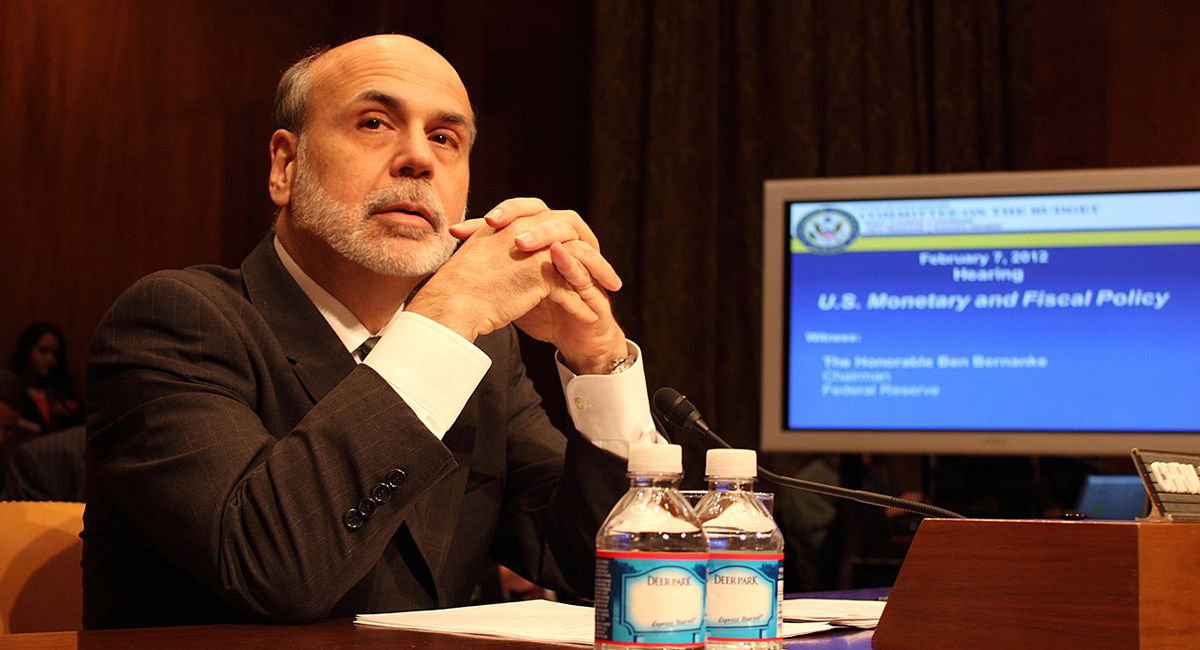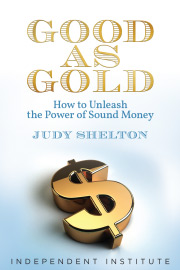This past Sunday, at the American Economic Association’s annual meeting in Atlanta, Ga., Federal Reserve Chairman Ben Bernanke offered up a lengthy, professorial defense of U.S. monetary policy over the last decade, focusing on its role in the financial crisis that has gripped the world economy.
It doesn’t quite rise to the level of Homeland Security Secretary Janet Napolitano’s claim after a barely foiled attempt to blow up a U.S.-bound airliner on Christmas Day that “the system worked really smoothly.” But Mr. Bernanke’s calm observation that “monetary policy from 2002 to 2006 appears to have been reasonably consistent with the Federal Reserve’s mandated goals of maximum sustainable employment and price stability” is nevertheless disturbing.
If the integrity of the dollar is not the Fed’s primary concern, or if its notion of “price stability” is restricted to some narrow core inflation index that does not include escalating costs for food and energy, let alone runaway prices for financial market assets and commodities, then the Fed is woefully inadequate to the task of safeguarding the value of our nation’s money.
Mr. Bernanke is not oblivious to criticism of the Fed’s role in the crisis. His assertion that “regulatory and supervisory policies, rather than monetary policies, would have been more effective means of addressing the run-up in house prices” hints at a possible scapegoat for the housing bubble that presaged financial calamity.
Yet nowhere in his 34-page apologia does the Fed chairman fault Congress for inflicting Fannie Mae and Freddie Mac on the home mortgage industry; nowhere does he attempt to analyze the damaging influence of government intervention in the private sector, or its distorting impact on market assessments of risk-and-return tradeoffs.
Instead of trying to shift blame away from the easy-money policies of the Fed that accommodated such ill-considered government intrusion into the mortgage-lending business—spawning a treacherous boom in exotic derivative instruments structured against seemingly endless supplies of securitized U.S. debt—Mr. Bernanke should strive to better explain why the Fed ignored troubling indications of a growing bubble.
According to U.S. Census Bureau statistics, the average sales price of a new home in 2000 was $207,000; the average price in 2007 was $313,600, more than 50% higher in just seven years. During the same period, based on Consumer Price Index (CPI) numbers for the interim years provided by the Bureau of Labor Statistics, the average sales price of a new home should have been $250,625 in 2007—that is, if the CPI fully captured the impact of excessive monetary issuance.
In other words, if you assume stable demand and supply, the government’s official CPI calculation only accounts for a 21% gain in the average sales price of a new home from the beginning of the decade to the start of the subprime collapse.
Mr. Bernanke glosses over this significant anomaly. He notes breezily in last Sunday’s speech that the most rapid price gains in housing occurred in 2004 and 2005. But it’s worth reminding the chairman that the Fed kept the federal-funds rate at a then-record low of 1% from June 2003 to June 2004. The most Mr. Bernanke concedes is a begrudging admission that “the timing of the housing bubble does not rule out some contribution from monetary policy.”
When it comes to evaluating Fed performance, the Fed itself always seems to get back to using core inflation measures. What about changes in the value of the dollar against other major currencies during the last decade? Shouldn’t a decline in global purchasing power for all Americans qualify for consideration in Fed deliberations over appropriate monetary policy?
If price stability constitutes one of the Fed’s key objectives, the fact that the dollar went from being worth 1.17 euros in October 2000 to a mere .63 euros in April 2008—roughly half as much—would seem to matter. Should the value of U.S. money really be subject to swings of such magnitude? The dollar’s current exchange rate of .69 euros no doubt reflects the “safe haven” status of U.S. investment at times of shaky global finances; it’s a residual privilege we seem poised to lose as fiscal imbalances mount.
And what about gold? The price of gold has soared to $1,128 today from $282 at the beginning of the decade, a fourfold increase. During the critical 2002-2006 period—when Mr. Bernanke insists monetary policy was consistent with the Fed’s price-stability goals—the dollar price of gold climbed steadily to $700 from below $300. Did the governors of our nation’s central bank not notice? Given that the U.S. government holds the largest amount of official gold reserves in the world, it would seem pertinent.
Indeed, gold is viewed by central banks the world over as a unique reserve asset. Contrary to monetary assets denominated in national currencies, its status cannot be undermined by inflation in the issuing country, nor is it subject to repudiation or default.
Which suggests that perhaps it is time to make available to the American public the sort of insurance against dollar depreciation that monetary authorities have long sought for their own portfolios. For those citizens who’ve become skeptical of the Fed’s ability to guarantee price stability in terms more meaningful than elementary CPI statistics—or who believe the bigger threat to their personal financial security lies in a potential repeat of the last debacle—why not provide a new class of Treasury obligations that would guarantee the purchasing power of the dollar in terms of gold?
It would not necessarily be a difficult task. Congress could pass legislation authorizing a limited issuance of gold-backed Treasury notes in compliance with existing legal restrictions pertaining to U.S. savings bonds (to own U.S. savings bonds you must be a U.S. resident and have been issued a Social Security number). The five-year Treasury notes would pay no interest, but they would provide for payment of principal at maturity in either ounces of gold or the face value of the security, at the option of the holder.
In the same way that inflation-indexed Treasury obligations provide an indication to the Fed of aggregate expectations on consumer prices, gold-backed Treasury notes would offer an additional useful tool for conducting monetary policy—one more broadly reflective of potential bubbles in both financial markets and commodities.
Don’t be surprised, though, if the Fed balks at the proposal. When it comes to the golden canary, it has already proven itself tone deaf.









